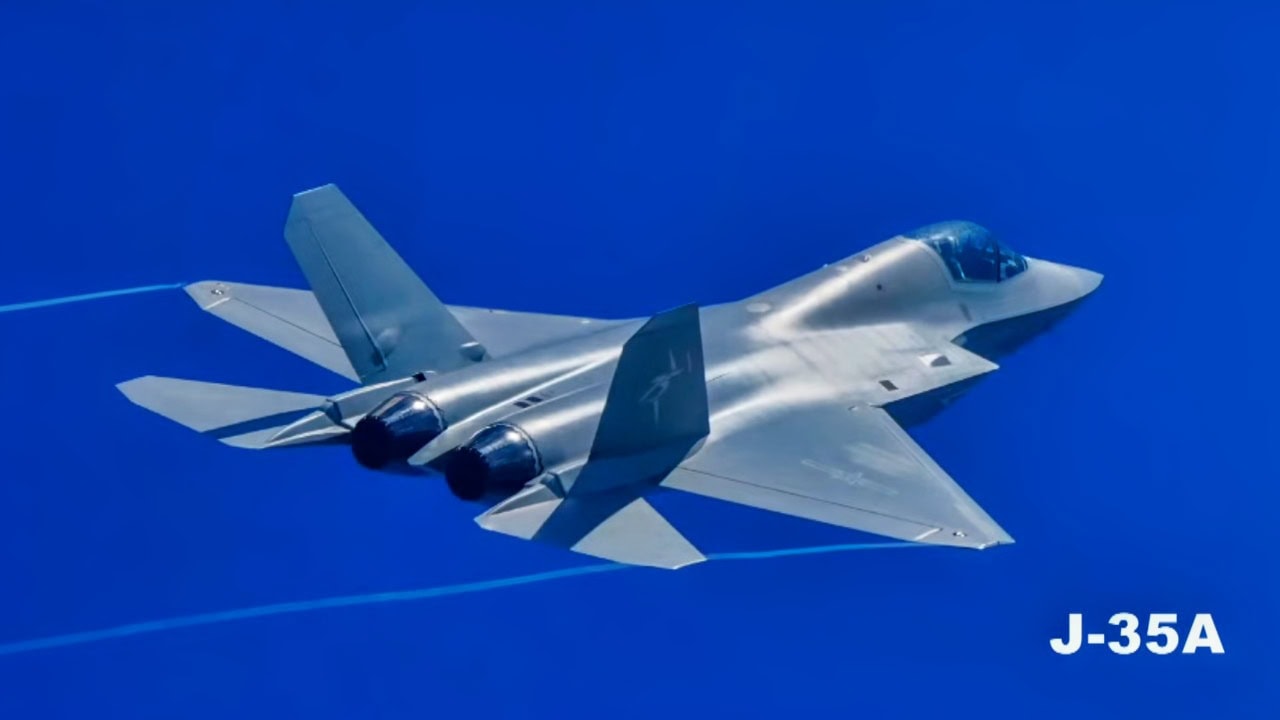Article Summary and Key Points: China’s J-35A stealth fighter is poised to reshape air combat in the Pacific. Evolved from the FC-31, the J-35A integrates advanced stealth features, cutting-edge avionics, and the PL-15E long-range missile.
Key Point #1 – Designed for carrier operations and land-based missions, it complements the J-20 in Beijing’s military strategy. While modeled after the U.S. F-35, questions remain about its true stealth capabilities and pilot training.
Key Point #2 – If mass-produced, the J-35A could significantly challenge U.S. air dominance, particularly in a potential Taiwan conflict. As China’s air power grows, the J-35A remains a key player to watch in the evolving balance of power.
China’s J-35A Stealth Fighter: A Game-Changer or F-35 Copy?
China’s J-35A stealthy fifth-generation fighter is something to keep an eye on.
It made an appearance at the Zhuhai Air Show in November 2024 and some observers crowed about how the Chinese Air Force is keeping up with and even eclipsing the West when it comes to stealth warplane development.
The J-35A is not on active-duty status at this time, but it shows how far the Chinese aerospace industry has advanced in the last 25 years.
J-35A: A Short History
The J-35A is based on the Shenyang FC-31 technology demonstrator, which was also known as the J-31. There were two prototypes in this program that flew in 2012 and 2016.
Originally the People’s Liberation Army Navy (PLAN) had its eye on the FC-31 to become a carrier-based naval aviation warbird. This was known as the J-35.
The J-35 has attributes for carrier landings and take-offs with folding wings and stronger landing gear with a launch bar for catapults. This flew in late 2021.
The PLAN also desired a land-based version of the fighter that would enable a dual-threat role beyond just carrier aviation.
This airplane was deemed the J-35A.
Is This Just a Copy of the F-35?
Unsurprisingly, the Chinese copied many attributes of the Lockheed Martin F-35A and integrated them into the J-35A. They are both fifth-generation and of medium weight. They have similar wing and tail shapes plus dual side air intakes.
China is believed to have conducted cyber espionage to steal design details from the Joint Strike Fighter program, which explains the similarities of the J-35A to the F-35 family of stealth fighters.
“The J-35A is a medium-sized fighter with a twin divert less supersonic intake, twin engine layout, and a single ventral internal weapons bay (IWB). It possesses a conventional wing and tail configuration, with the usual hallmarks of a stealthy fifth-generation aircraft such as edge alignment, chines, serrated paneling and doors, and a relatively smooth external finish,” according to the Diplomat.
Engines Based on Russian Models
While the FC-31 had Russian-built Klimov RD-33 engines, the J-35A is believed to have originally the WS-13E Chinese engines that designers reverse-engineered from Russian power plants.
By the time the J-35A flies regularly, it could have the advanced WS-21 turbofan engines.
Watch Out for This New Missile
The J-35A features a new missile called the PL-15E long-range air-to-air munition. This was also on display at the Zhuhai expo and has folding tails to decrease the space it takes up in the weapons compartment, hopefully giving the J-35A the capacity to carry more weapons.
This Could Result in Two Active-Duty Stealth Fighters
One thing the Chinese should be commended for, even if they used espionage to get it, is the production of two stealth fighters including the J-20 Mighty Dragon.
This makes the warplanes somewhat on par with the F-35 and F-22 Raptor, although both of the American-built jets are stealthier than the J-20 and J-35A.
However, the J-35 carrier-based stealth fighter and the J-35A land-based fighter are still developing.
They will eventually give the PLAN better carrier aviation capabilities, and the ground-based J-35A can give the Chinese more options for deployment at a high rate of operational tempo and more sorties.
The J-35 and J-35A are made for multi-mission sets and for ground and sea strikes. These operations allow it to challenge the primacy of the U.S. F-35, which has multi-role capabilities.
J-35 and J-35A: These Could Be Used During a Taiwan Attack Someday
The J-35 and J-35A have stealth coatings to reduce radar signature and they can fly missions on Day One of a Taiwan conflict paired with the J-20 Mighty Dragon to clear out enemy air defenses and radar installations along with command-and-control centers. And that is just for land-strikes.
The J-35 carrier-based model would challenge adversarial surface ships in a surprise attack too.
The J-35A is still in the testing phase and has yet to enter active service. China is looking forward to having two stealth airplanes to challenge U.S. primacy in the region.
The J-35 will eventually fly off carriers like the F-35C. There could conceivably be a vertical take-off and landing model that would further copy the F-35 family of Joint Strike Fighters.
Even though the J-35 and J-35A give the Chinese more options in battle, their pilots may not be up to the challenge. They have no combat experience and have yet to show that they can engage in aerial combat over a period of decades like American fighter pilots.
But the J-35 and J-35A are interesting airplanes that will give the Chinese Air Force and Navy stealth options for Day One battles that could be used in an attack on Taiwan someday.
This means that the J-35 and J-35A program is worth following closely.
China’s Stealth Fighters: A Photo Essay
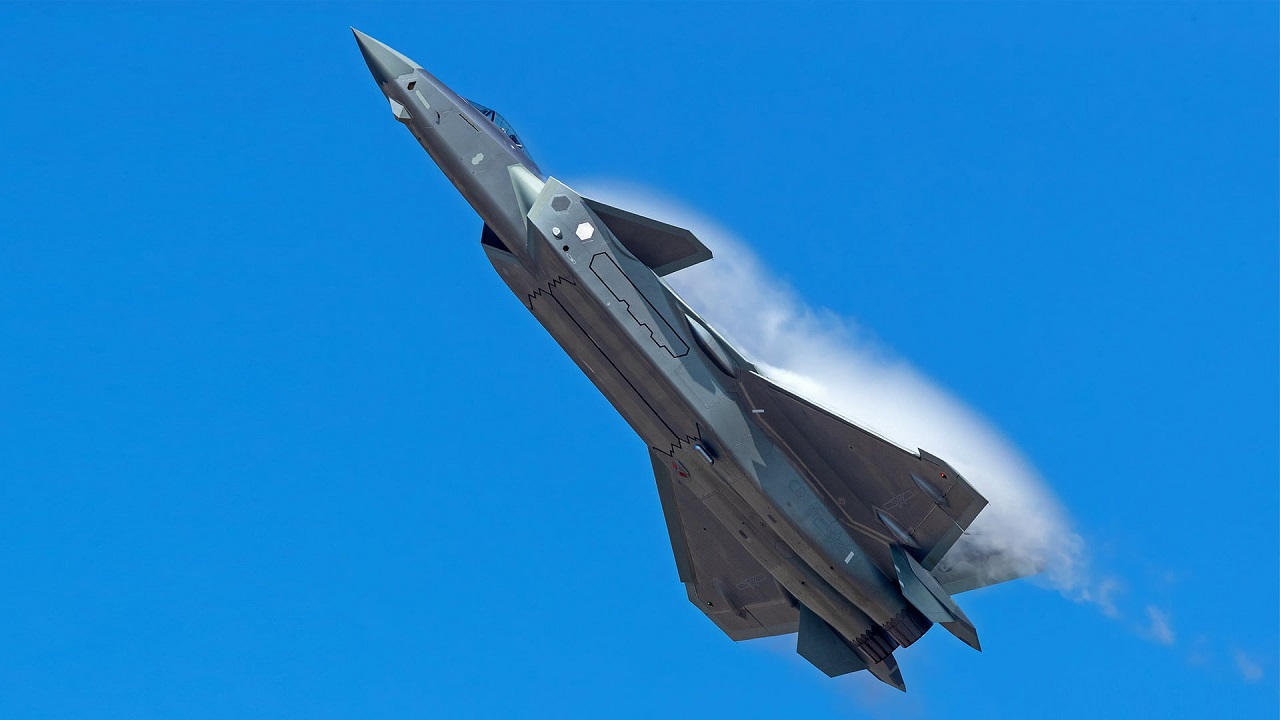
J-20 Stealth Fighter. Image Credit: Creative Commons.

J-20 Stealth Fighter. Image Credit: Artist Rendering/Creative Commons.
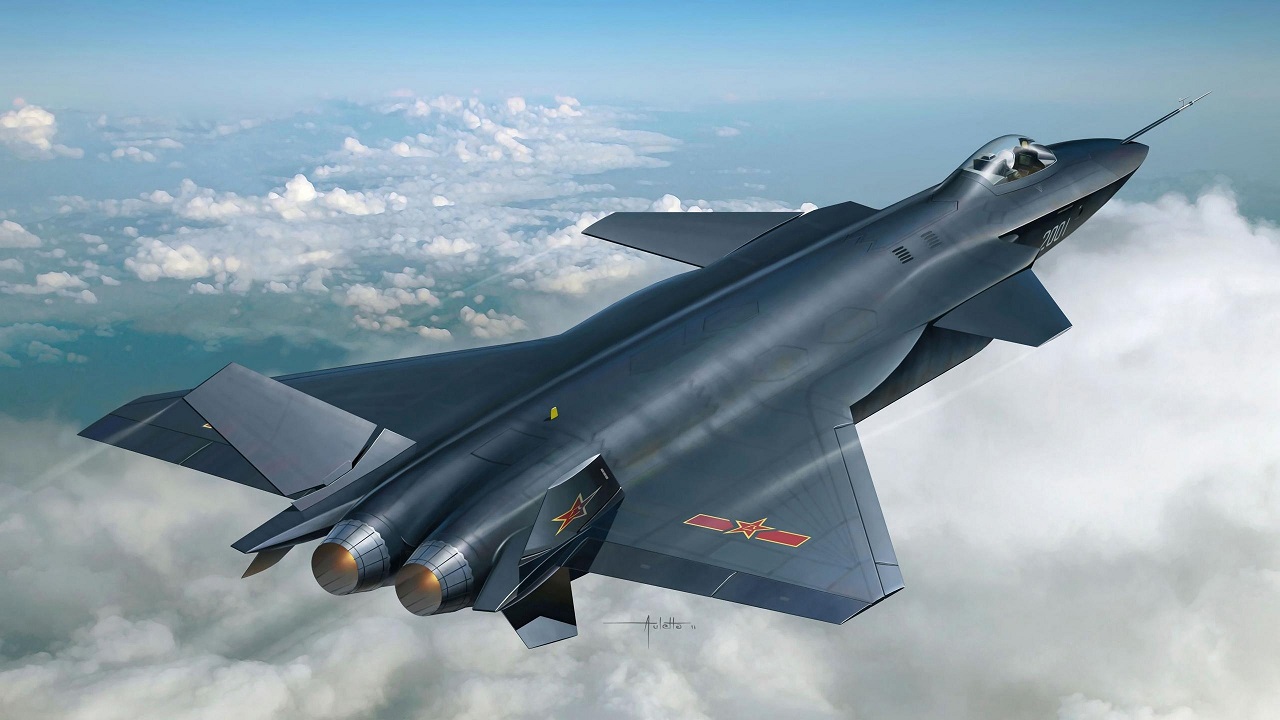
J-20 Fighter via computer generated artist rendering. Image Credit: Creative Commons.

China’s J-20 stealth fighter. Image Credit: Creative Commons.
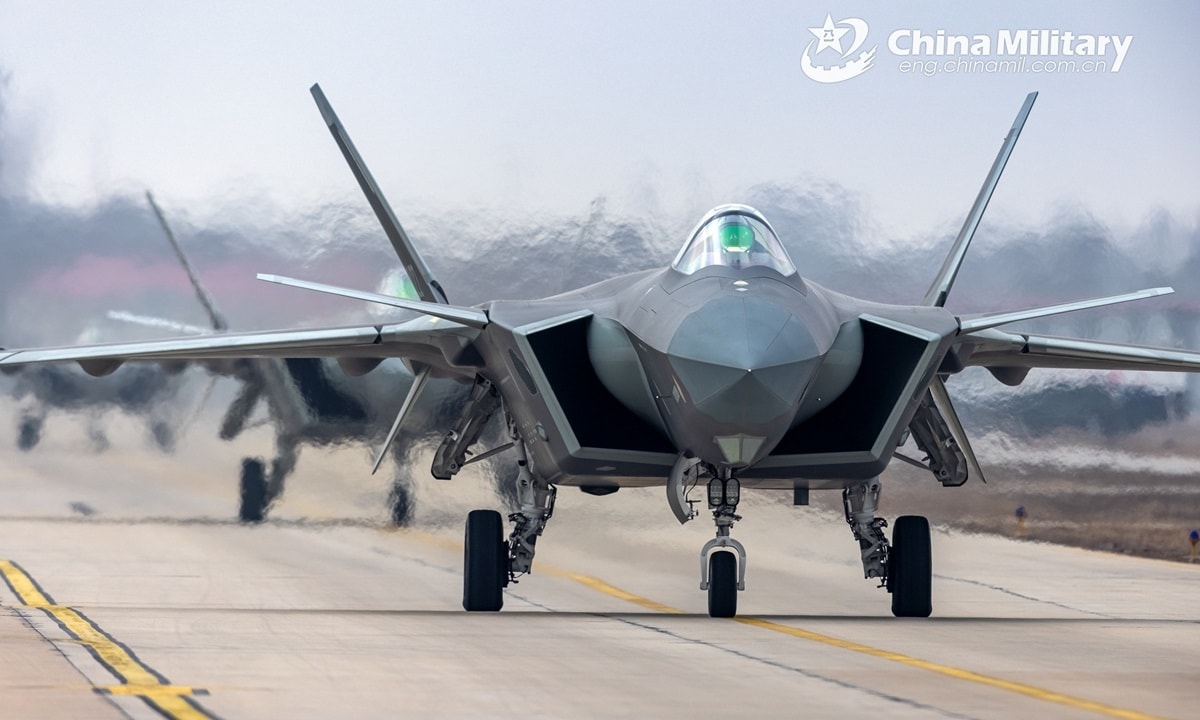
J-20 fighter. Image Credit: Chinese military.
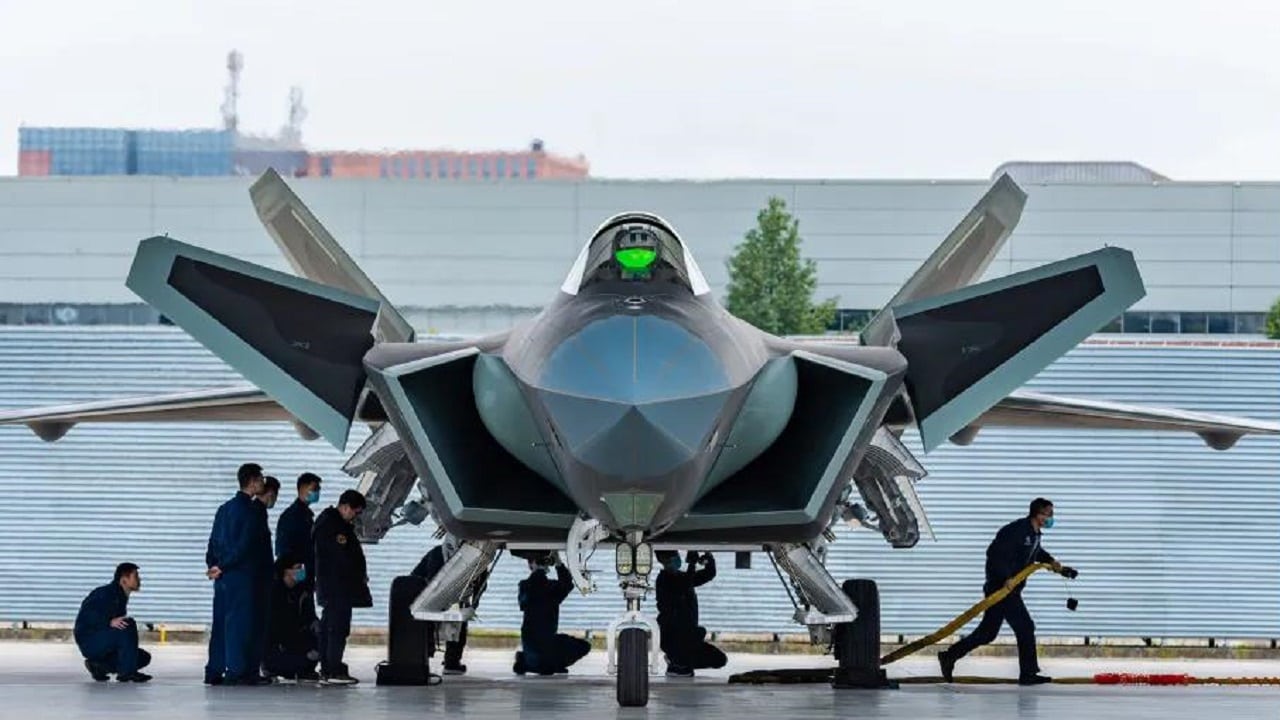
J-20. Image Credit: Chinese Internet.
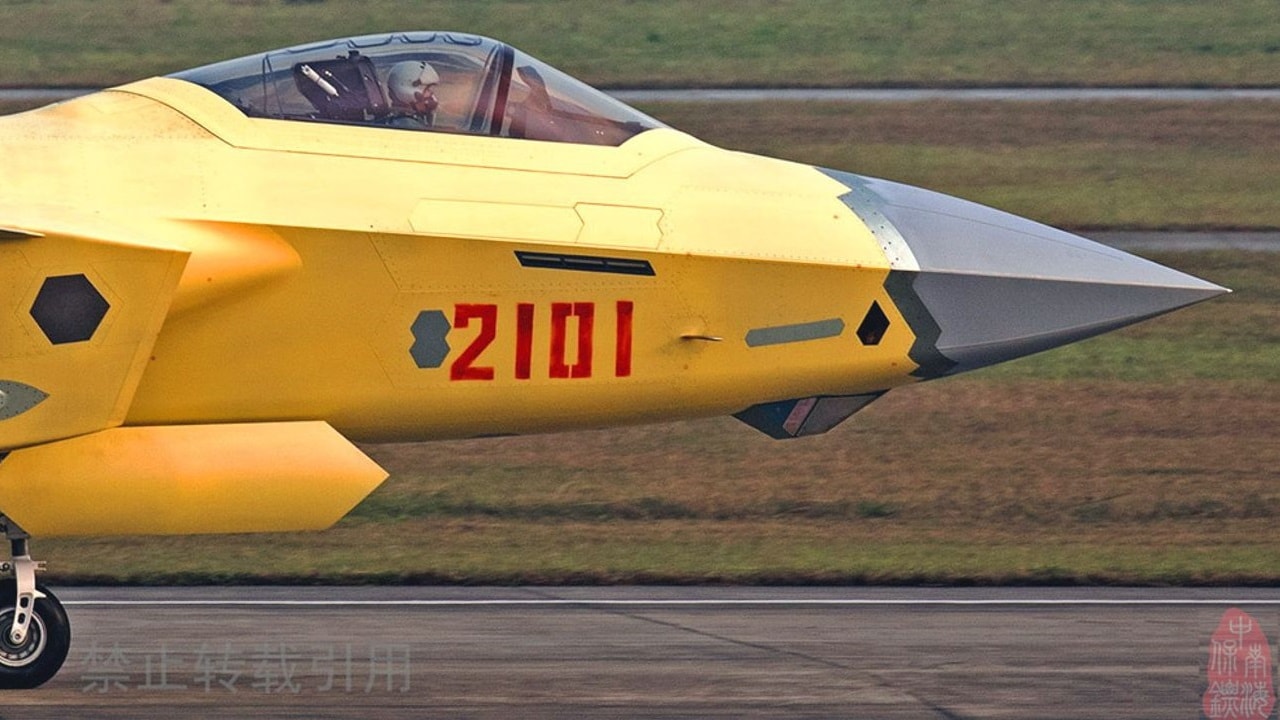
J-20 Stealth Fighter. Image Credit: Chinese Military.

J-20 stealth fighter. Image Credit: Creative Commons.
About the Author: Dr. Brent M. Eastwood
Brent M. Eastwood, PhD, is the author of Don’t Turn Your Back On the World: a Conservative Foreign Policy and Humans, Machines, and Data: Future Trends in Warfare, plus two other books. Brent was the founder and CEO of a tech firm that predicted world events using artificial intelligence. He served as a legislative fellow for U.S. Senator Tim Scott and advised the senator on defense and foreign policy issues. He has taught at American University, George Washington University, and George Mason University. Brent is a former U.S. Army Infantry officer. He can be followed on X @BMEastwood.
More from 19FortyFive
The Army’s AbramsX Tank Is Getting ‘All the Attention’ for 1 Reason
Why Canada’s Fear of a ‘Rogue America’ is Deeply Misguided
Russia’s New Tu-160M Bomber Can Be Summed Up in Just 2 Words

